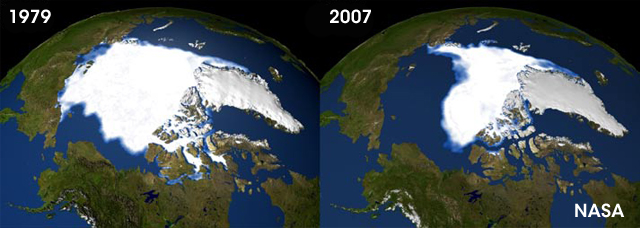Before we say good-bye to the year 2010 and hello to the year 2011, we would like to take this interval time to introduce you to THE GOOD 350.Org global movement to solve THE BAD climate crisis of having over 350 parts per million CO2 in the atmosphere and replace THE UGLY environmental consequences with a global green transformation.
To transcend the language barrier, 350.org helps the whole world to understand what 350 is all about in 90 seconds and 0 words in this 350.org animation:
THE GOOD
“350.org is an international campaign that’s building a movement to unite the world around solutions to the climate crisis—the solutions that science and justice demand.”
Their mission is “to inspire the world to rise to the challenge of the climate crisis—to create a new sense of urgency and of possibility for our planet.”
On the 10th of October (10th month) of 2010, in every corner of the globe, they started to implement solutions to the climate crisis: from solar panels to community gardens, wind turbines to bike workshops. They told leaders: “We’re getting to work–what about you?” Join them at http://350.org
Here are THE GOOD results of 350.org’s hard work:
- in October of 2009 they coordinated 5200 simultaneous rallies and demonstrations in 181 countries,
- on 10 October 2010, they organized a ‘global work party’ all over the world, with over 7000 events in 187 countries
- people put up solar panels, dig community gardens
- and sent a strong message to our leaders: ‘If we can get to work on solutions to the climate crisis, so can you.’
THE BAD
“Scientists say that 350 parts per million CO2 in the atmosphere is the upper safe limit for humanity.”
Any number over 350 parts per million CO2 is BAD for us and our planet.
Presently, the planet has about 388 parts per million CO2 – and this number is rising by about 2 parts per million every year.
Scientists are now saying that’s too much – that number is higher than any time seen in the recorded history of our planet—and we’re already beginning to see disastrous impacts on people and places all over the world.
The UGLY
Therefore, the world has experienced UGLY consequences which are delineated by 350.org as follows:
- Glaciers everywhere are melting and disappearing fast—and they are a source of drinking water for hundreds of millions of people.
- Mosquitoes, who like a warmer world, are spreading into lots of new places, and bringing malaria and dengue fever with them.
- Drought is becoming much more common, making food harder to grow in many places.
- Sea levels have begun to rise, and scientists warn that they could go up as much as several meters this century. If that happens, many of the world’s cities, island nations, and farmland will be underwater.
- The oceans are growing more acidic because of the CO2 they are absorbing, which makes it harder for animals like corals and clams to build and maintain their shells and skeletons.
- Coral reefs could start dissolving at an atmospheric CO2 concentration of 450-500 ppm. These impacts are combining to exacerbate conflicts and security issues in already resource-strapped regions.
- The Arctic is sending us perhaps the clearest message that climate change is occurring much more rapidly than scientists previously thought. As shown below, in the summer of 2007, sea ice was roughly 39% below the summer average for 1979-2000, a loss of area equal to nearly five United Kingdoms.

350.org is asking us for our help and to spread the following important piece of information to our fellow citizens, communities, countries, and the world:
“We need to stop taking carbon out of the ground and putting it into the air. Above all, that means we need to stop burning so much coal—and start using solar and wind energy and other such sources of renewable energy –while ensuring the Global South a fair chance to develop. If we do, then the earth’s soils and forests will slowly cycle some of that extra carbon out of the atmosphere, and eventually CO2 concentrations will return to a safe level. By decreasing use of other fossil fuels, and improving agricultural and forestry practices around the world, scientists believe we could get back below 350 by mid-century. But the longer we remain in the danger zone—above 350—the more likely that we will see disastrous and irreversible climate impacts.”

